Measure six times, cut once - Mick's Workshop 442



|
Measure six times and cut once, Falcon wheels, and let's get some tool tips happening
MICK'S WORKSHOP
You might recall we’re in the throes of building up a monster Monaro – a custom job for Tom Georgas. To recap, it’s a 1971 HG GTS that’s been in the family a long time and is now undergoing a fairly high-end build. That includes a big engine – actually a Rambler Hornet 400 stroked to 427 – Turbo 350 transmission and lots more.
The front end is getting a McDonald Brothers Racing front end with coil overs plus rack and pinion steering. Hanging off the end of that set up is a nice set of Wilwood brakes. We had a trial fitment of the front end last time we looked at this car (issue 438) and it all went pretty smoothly.
For the rear, we’re going with a 9-inch TrueTrac diff, retaining leaf springs.
This time, the mission was to do a test-fit of the diff and axle housing. As they say in the classics, you measure twice and cut once. Though given how tight the tolerances need to be, I reckon we measured at least half a dozen times, particularly given we were sizing it all up for wheels as part of the package.
We’ve enlisted the help of local expert Charlie Gauci for the rear end. Half the trick with these big jobs is knowing when to bring in a specialist. Don’t be afraid to tackle things yourself, but at the same time ask around and make sure you’re getting good advice. Charlie and I spent a Saturday carefully measuring up this car before he started on the rear and of course we found a hitch. The bodywork folk who did the minitubs for us didn’t quite follow instructions, and we’re going to have to make some minor mods to the body to ensure everything works. Good to know that now, rather than later when more components are lining up.
Our efforts for today were to do a trial fit of the partially-made axle and diff housing, to ensure we’re on target. So far so good.
Meanwhile I’ve held off one job until we have more info. We’ve had the fuel tank cleaned out and blasted, but have delayed painting it. You see with this giant pineapple of a diff underneath, we need to see exactly how it sits on its wheels and what sort of clearance is left over. Then we’ll modify the tank and finish it off.
And that’s pretty typical of this sort of build. It’s a good idea to be thinking a couple of components ahead, so you’re anticipating any dramas along the way. Anyway, watch this space and we’ll keep you up to date with what’s happening.
HERE'S MY TIP
Brake Me
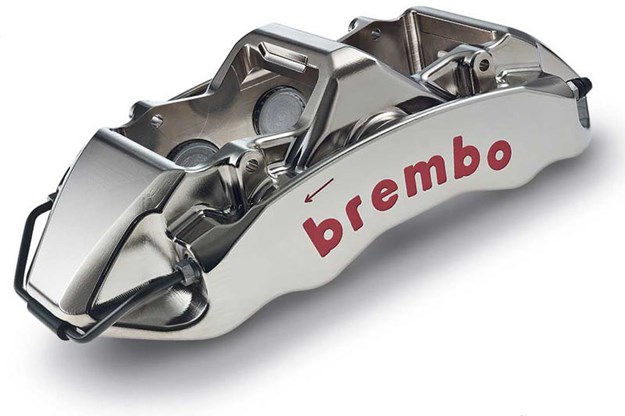
Changing the pads on your disc brakes? Take a bit of extra time and clean out the calipers properly and check their condition. A cleanup or light service means you’re only doing the job once and not trashing a disc because of dragging pistons.
LETTERS
XU-1 Noise

The LC GTR XU1 appears to have had a single exhaust and a twin tip muffler
Having been a long term subscriber to your fabulous magazine I just love the way that it sometimes throws up little conversation starters. Currently enthralled by the article on the LC GTR XU-1, wow, what an Aussie icon. Absolutely loved the article and the featured car. Back in the 70s, having owned and rallied one in Yellow Dolly and my brother having raced a Plum Dinger in Series Production that article certainly brought back some fond memories to a couple of ageing enthusiasts.
It also raised a question for you guys, (maybe Morley) to investigate and provide an answer to. Not right up there with the Red Motor in EJ series that has been running longer than Blue Hills, but there is an issue with the rear muffler fitted to the featured car. Our recollection of the LC XU-1 series when they were first released was they were fitted with a single outlet large diameter exhaust which gave the little "triple carburettor baby moon rocket" a very unique sound. Even loud!
We note that the featured car has been restored with a LJ-style twin outlet muffler and we are now wondering whether the LC was ever sold with this "quiet" muffler as an option or whether there is an issue with obtaining the period correct item. This may be the case as having seen a couple of these beautifully restored cars at Cars and Coffee meets recently they have also been fitted with the twin outlet muffler and just don’t sound quite like the original.
Hopefully, the UC Team can assist to sort this one out but that aside, congratulations to the Morgillo family on the fantastic job they have done to bring this one back to life. Note that the article also mentions a 4 speed Aussie box, but we will forgive that one as the original Opel boxes were a bit fragile so that’s a common sense move.
Brian Palmer
THANKS BRIAN, that had us scrambling to the files. I suspect there will be someone in a Torana club somewhere who will have this down to the last detail – so feel free to share with us. What we have established is that early versions did have a single tailpipe, but Holden had what was described as a forked twin tailpipe in the market around September 1970, so within the life of the LC. This and other arcane information can be found in Norm Darwin’s excellent book, Torana Tough.
Wheel Right
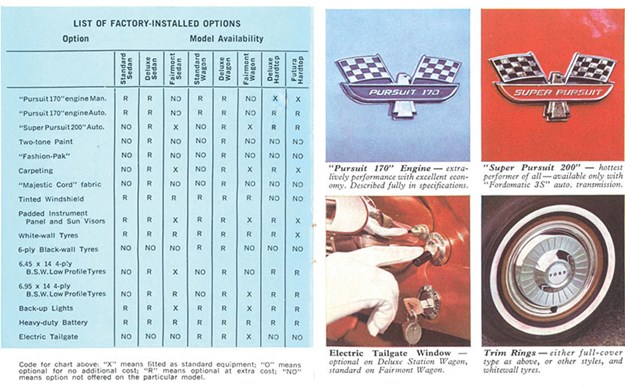
On the subject of wheel sizes for XP Falcons, A McEwen is right. There are indeed 13" and 14" variants available, for good reason.
At the beginning of XP production 13" was the only size available in 4-stud for sedan and wagon, and 5-stud for taxi, ute and sedan delivery (van).
During 1966 the XP took the fight up to the door of the HD and HR Premiers by dropping the Futura sedans and Squire woodie wagons and introducing the classier XP Fairmont sedan and wagon, the first Australian cars to offer front disc brakes as standard equipment.
This single-piston, solid rotor Girling set up necessitated a change to 14" 4-stud wheels and became a popular option on the Futura hardtop also. In fact many of the last XP hardtops had factory disc brakes and vinyl roofs fitted as sweeteners to clear the remaining stocks as the XR loomed.
The XR was the first Falcon model to have 14" 5-stud wheels.
Julian Hembrough
THAT’S WHAT I love about this magazine – raise a topic and there will be someone out there with more to contribute. Good on you, Julian.
E10 for the Val?
My local servo has been promoting E10 pretty hard lately and I’ve been avoiding it. But it’s tempting to give it a go in my CL Valiant. It’s just running the basic 245 – is there any advantage in it?
Bob Hanson
DON’T DO IT, Bob! You don’t live in a sugarcane belt by any chance? That’s where a lot of the raw material comes from. It seems to me that E10 is as much a political football as it is a fuel and the simple rule is, if you have an old car don’t even think about it. Whether the 10 per cent ethanol is good or bad as fuel is not really my worry here. The thing is your fuel system needs to be designed to cope with the ethanol from day one, otherwise you’ll find all sorts of interesting seals and lines giving up the ghost. As a general rule, if you’re driving something that has a carburettor or mechanical fuel injection – which covers most of the stuff we work on – you wouldn’t even consider it. If you have a later car, don’t use it unless the owner manual specifically says ethanol blends are okay.
Stiff 86

Just a snippet re the piece on the Toyota/Subaru 86/BRZ this issue last issue:
Another accolade, which is not visible physically, but certainly apparent when one drives the car, is the rigidity of the chassis. Good handling follows good chassis design, and a secure platform from which to hang the wheels is mandatory. The eldest son’s daily driver is an 86 which also does numerous track days at EC.
For this reason the brake fluid is replaced on a regular basis. Of note is that when all four wheels are removed for the bleeding process and said car has been lowered onto four stands, (of equal height), on a level floor, one stand remains 5mm clear of its rear location. If this was most any other car the body/ chassis flex would see all four stands in contact and loaded.
Eric Waples
YEP, I CAN well believe that. They’re as sharp as a tack to drive and a whole lot more fun than the spec sheet might suggest. Watch this space, but one day they’ll be a classic – though hopefully I’ll have retired to somewhere warm and sunny by then!
Hoisted
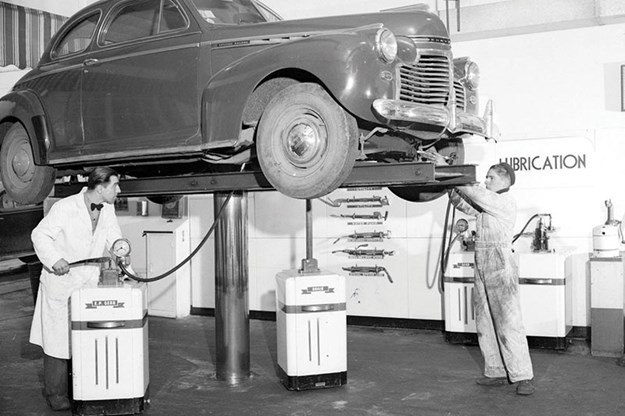
Need some advice on buying a hoist? Watch this as Mick will be on the job next issue
It has occurred to me after recently purchasing a hoist for my shed that Unique Cars magazine should consider having a regular page on tools and equipment. My hoist experience had me wishing that I knew the right questions to ask and what to check out prior to purchase. I did the obvious checks to ensure that the hoist I was considering would fit my shed but during assembly and installation of my purchase, I came to the conclusion that I may have made a different choice of hoist if I had been more informed. I am specifically referring to strengths and weaknesses of various two post and four post hoists not the pros and cons of the two types.
Likewise, with tools and specialist equipment. Some wonderful items are now within the means of the weekend mechanics and restorers. I suggest that if Unique Cars take this suggestion forward that consideration be given to the fact that the weekend mechanics and restorers may not require or have the means for a top spec item and that the equipment may not have the high usage rate that necessitates the purchase of top quality items.
Les Rose
GREAT IDEA, Les. I’m not a fan of buying the most expensive tool just because it claims to be the best, and there are times when you can make do very nicely with something basic. You’ve got us scratching our collective nuts and we’ll definitely have a go at this. So, we’ll do hoists first. What’s the popular vote after that? Drop me a line at uniquecars@primecreative.com.au
Underbonnet Fluff
I owned a 1982 VH SLX that I bought from my Dad who ordered it as a brand new build from Les Vagg. It was a 4.2 Blue V8 auto with country pack (light weight sump guard, Bilstein shocks etc) and a beautiful car. It did not have underbonnet sound proofing and didn’t need it. It was white with beige interior with the darker brown stripes on the doors.
I reckon blue 4.2 with dual exhausts and 2.78 diff was the pick of them.
Len Robson
WELL, THAT’S our second confirmation on the good old VH, so thanks for that, Len. As for the 253/4.2 engine, it has a lot of fans. It’s not the most powerful thing out there, but with the right gearing it’s got a nice fat midrange and makes for a great highway car. The country has never been the same since they stopped building them!
Audi or Subaru
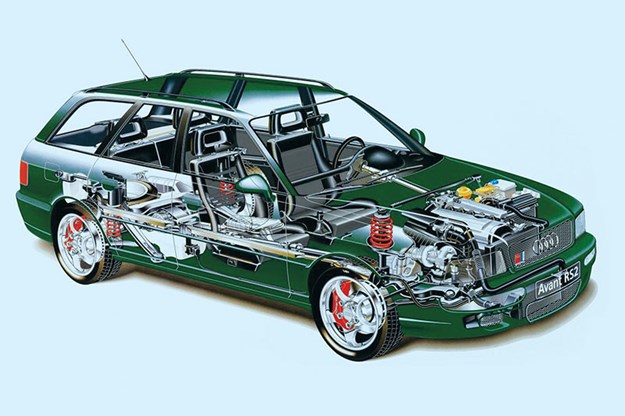
Fast and capable, but what’s it going to be like in 10 years?
I’ve got an obsession going on about getting an allwheel- drive car with a bit of performance. Looking through the classifieds, an old Subaru WRX is an obvious choice, but then there are a lot of Audis that look tempting (and maybe more luxurious) for the same money. What do you reckon I should buy? Will I end up regretting it?
Jim Keith
THERE’S A general feeling out there that early WRXs are going to be collectible, before we’re much older – some of the really special ones already are and get silly money thrown at them. Okay, any all-wheeldrive system has extra components and complexity, so there is more to wear out and more to fix. That’s the price you pay for the extra grip.
Subaru knows its stuff and, if you manage to avoid an example that was driven like it was stolen – they were the country’s top choice as a get-away car for years – you should do alright.
Audis probably give you more luxury per buck, like you say. Without knowing exactly which models you’re looking at, I can only give you a few suggestions.
First, join a club – any specialist car is going to be a whole lot easier to buy and run if you have some people around you who know what you’re looking at. Oh, and they can hopefully steer you towards a decent one.
Second, take it to your local mechanic and get it up on a hoist before you hand over the readies.
Third, think about how sophisticated and/or complex the car is. The more high-end electronics that are on board (and now I’m thinking Audi) the more trouble it’s likely to be after the first ten years of its life. Good luck and let us know how you get on. Send us some pictures!
TRIVIAL PURSUIT
Where Am I?
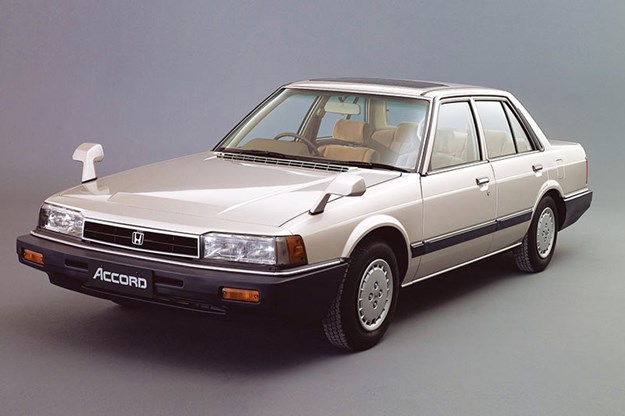
Honda lays claim to one of the first in-car navigation systems, though it wasn’t GPS. Instead it relied on a set of gyropscopic sensors to help calculate the car’s movement and relay its position on an illuminated map (from a set) inserted in the dash-mounted display by the driver. And no, we don’t know how many marriages ended because of it. It was fitted to a 1981 Accord.
Write to Mick c/ouniquecars@primecreative.com.auor Unique Cars magazine, 379 Docklands Drive, Docklands, Victoria 3008
Unique Cars magazine Value Guides
Sell your car for free right here
Get your monthly fix of news, reviews and stories on the greatest cars and minds in the automotive world.
Subscribe

.jpg)














